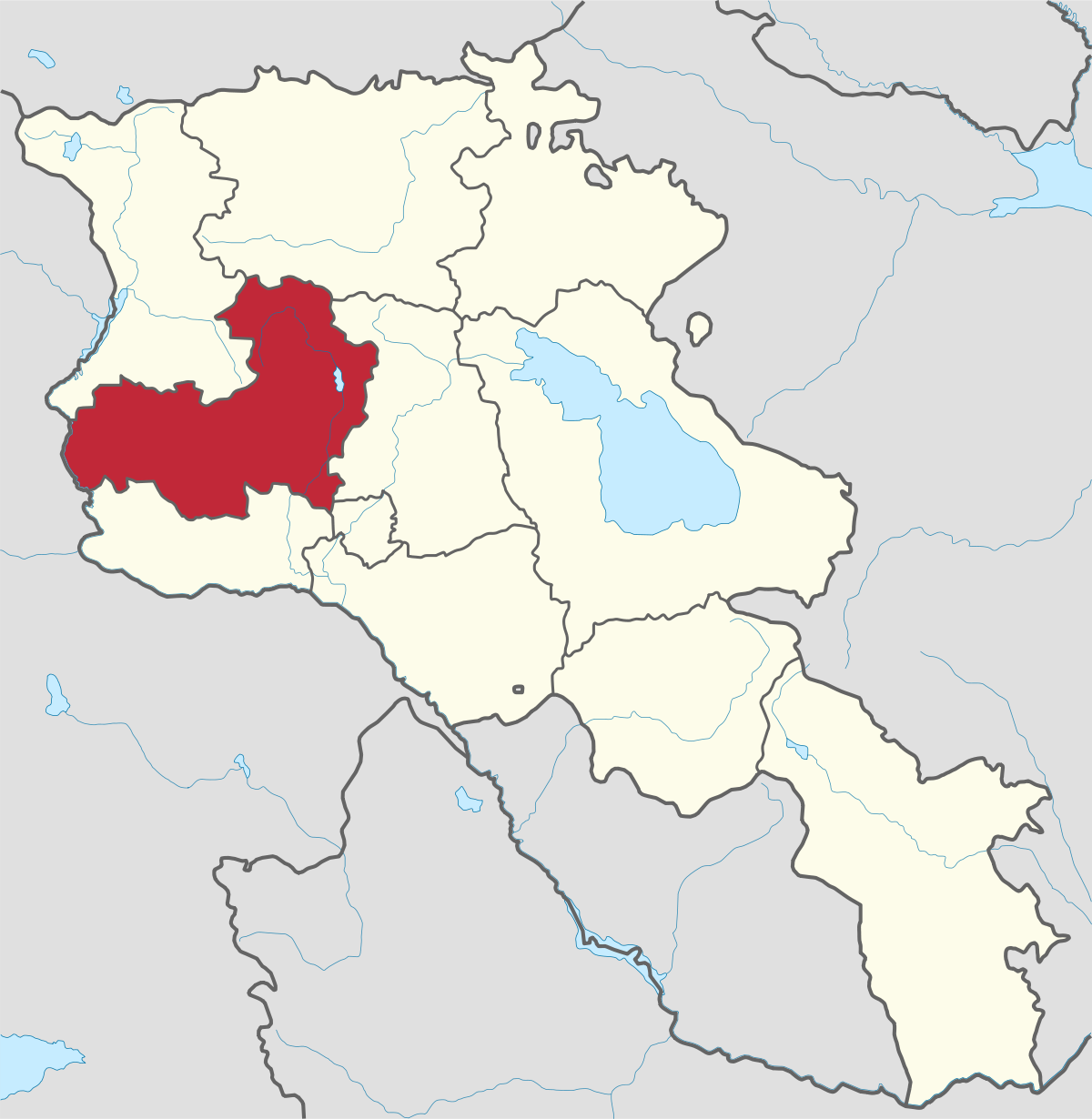
Aragatsotn Region
Aragatsotn is named after the massive mountain (4095m / 13,435 ft.) that hovers over the northern reaches of Armenia. This region is one of the...
History of Armenia
Armenia has a history of thousands of years. However during their history the Armenians have had various tragic pages. The country has been under the sway of such empires, as Roman, Byzantine, Persian, Seljuk Turks, etc. The country was divided into two parts in 387. And these parts have always been under different empires’ rule.
In modern historical period, the eastern part of Armenia was under the rule of Persia, later, Russian Empire. The Western part was under the sway of Byzantium, later, Ottoman Empire.
Nowadays, the territory of the Western Armenia is in the territory of the modern Turkey. This territory is full of Armenian relics, such as churches, fortresses, other buildings and architectural complexes.
In the beginning of the 19th century, Eastern Armenia was ceded by the Persians to the Russian Empire.
This part of Armenia declared independence in 1918 but the sovereignty (the First Republic of Armenia) lasted only two years. The Red Army of the Soviets conquered the country in 1920.
Being under the Soviet rule for 70 years, Armenia restored its independence in 1991. Today’s Armenian state is considered the Third Republic of Armenia.
Urartu Kingdom
2000-1000 B.C. The Indo-European people start to emerge in Europe and Asia and begin to settle down in the Armenian Highland.
860 B.C. The Urartu Kingdom is mentioned for the first time in the scripts of Assurbanipal, the mighty Assyrian king. The center of the Urartu Kingdom laid by the shores of Lake Van and developed to an impressive neighbor for Assyria.
9th c. B.C. The original Armenian tribes start to settle down in the Armenian Highland and establish themselves. According to the legend the leader of the Armenians was a man by the name Hayk, whom the Armenians regard as their tribunal father and therefore call themselves "hay" (hay), i.e. the sons of Hayk, 60/22 and their country Hayastan (the country of Hayk). Another more scientific explanation about the naming of the Armenian people is based on the original tribes of which the present Armenians consist of. The local people who lived in the area at the time of the arrival of the Indo-European tribes were called the Arme-Shupria people (the people of king Arame). The invading Indo-Europeans called themselves the Hayatsa people and came in time to dominate the Armenian highland and assimilate the Arme-Shuprias. Based on the names of these two people, the Armenians called themselves by the name of the dominant tribunal name, i.e. "hay" and the country Hayastan, while the neighbours called them by their old name: Armenian and their country Armenia. Another theory is simply suggesting that the name Armenian is the remaining of "Arian men", who the natives called the newly arrived Indo-Europeans.
782 B.C. The Urartu king, Argishti I, builds the city of Erebouni (present-day Yerevan) and proclaim it as his capital.
Armenia becomes a country
7th c. B.C. The Armenian prince, Parouyr, allies himself with the Medes and the Chaldeans in the war against Assyria. After the conquest of the Assyrian capital, Nineveh, the victors appoint him as the Armenian king.
521 B.C. Armenia is mentioned officially for the first time, as a country, in cuneiform belonging to the Persian king, Darius I. Armenia is annexed to Persia.
331 B.C. Alexander the Great attacks Persia and defeats Darius III. However, Armenia is never conquered by the Macedonian army. This results in Armenia freeing itself from Persia and, more or less, regains its independence.
322 B.C. The first Armenian Kingdom is founded by King Yervand I.
215 B.C. After almost an entire century of independence, Armenia loses its sovereignty to the Seleucids for a short period of time.
The Artashisian Dynasty, the First Royal Dynasty of Armenia (190 B.C. - 12 B.C.)
190 B.C. King Artashes I proclaims himself as king of Armenia and becomes the founder of the first Armenian royal dynasty, the Artashisian.
105 B.C. Armenia loses the ongoing war against the Persians and King Artavazd II, in accordance to the customs of those days, to surrender his son, Tigran, to the enemy. Tigran grows up at the Persian royal court, which characterized his way of thinking and played a major role during his future ruling.
95 B.C. King Artavazd II dies and is succeeded by his son, Tigran II, also known as Tigran the Great. During the reign of Tigran II, Armenia reaches its height in history and becomes a mighty power. The Roman general Lucullus came to be the only real opponent of Tigran the Great.
Tigran the Great creates Great Armenia
70 B.C. The Armenia of Tigran II reaches its height. His empire stretches from the Caspian Sea in the east to the Mediterranean Sea in south-west and Black Sea in the north-west.
69 B.C. A war breaks out between Rome and Armenia. Lucullus engages in his first war against Tigran II.
68 B.C. Lucullus starts his second war against Armenia.
67 B.C. Pompey's war against Armenia.
56 B.C. Tigran the Great dies in 56 B.C. and is succeeded by his son Artavazd III.
53 B.C. Marcus Antonius attacks Armenia. In collusion with Cleopatra he lures the Armenian king into a trap and murders him.
34 B.C. Alexander, son of Marcus Antonius and Cleopatra, is put on the Armenian throne and rules the country during three years under the protection of the Roman army.
31 B.C. Artashes II, son of the murdered King Artavazd III, comes to power and allies himself with the Persian king Farhad.
20 B.C. The Roman emperor, Augustus, removes Artashes II from the Armenian throne and replaces him with his brother, Tigran III.
12 B.C. Tigran IV becomes king of Armenia. He is the last king in the Artashesian dynasty and dies in 2 B.C.
2 B.C. Caius Caesar sends his stepson, Ariobarzane, as king of Armenia.
11 A.D. Ariobarzane I is succeeded by his son Artavazd V.
17 A.D. Germanicus comes to Armenia in order to crown King Artashes III.
Arshakounian Dynasty Arshakounian, the Second Armenian Royal Dynasty (53 A.D. - 423)
53 A.D. Tirdat I takes the Armenian throne and founds the Armenian royal dynasty of Arshakouni.
62 A.D. Tirdat I is crowned by Emperor Nero in Rome and proclaimed as king of Armenia.
228 The Sasanids, who since a while back have taken the power in Persia, attack Armenia but are driven back.
242 The Sasanids sign a peace treaty with Rome and concentrate their forces entirely against Armenia. King Khosrov I falls victim for a act of treason and is murdered by the Sasanids.
252 King Khosrov I's son, who has been saved from the Sasanid mass murder of the royal family and grown up abroad, returns to Armenia and is announced as King Tirdat III.
288 King Tirdat III is baptised by Grigor Lousavoritch (Illuminator) and accepts Christianity.
Armenia: The First Christian Nation in the World, 301
301 Armenia becomes the first official Christian state in the world, when King Tirdat III proclaims Christianity as the official state religion of Armenia.
303 The construction of the cathedral and the Holy Sea of Etchmiadzin (Armenian for "the confinement place of God's only-begotten son") begins and is finished in year 305.
330 King Tirdat III dies and Armenia enters one of the most difficult periods in its history. King Khosrov II succeeds Tirdat III on the Armenian throne.
340 Khosrov II's son, Tiran, comes to power. During his reign, Armenia is weakened further as a direct result of the conflict between the court and the church.
363 Byzantine sings a treaty with Persia, according to which the Byzantine Empire gives large and strategic areas in Armenia to the Persians and, furthermore, abandons Armenia alone against the Sasanid Persia. Shapour attacks Armenia and a bloody war breaks out.
369 King Pap is crowned as king of Armenia and leads the country to victory against the Persians and drives them out.
374 King Pap falls victim for a staged Byzantine conspiracy and is murdered during a feast.
378 King Vagharshak is crowned as king of Armenia. During the coming years, Armenia is divided in two camps: one supported by Byzantine and another supported by the Sasanids.
386 King Khosrov III is crowned as king. Byzantine annexes the western parts of Armenia (Armenia Minor) to the East-Roman Empire.
392 Armenia regains its might by the coronation of King Vramshapouh in 392.
Mesrop Mashtots invents the Armenian alphabet
405 Mesrop Mashtots, on orders from King Vramshapouh and Catholicos Sahak I, invents the Armenian alphabet.
416 Shapour, son of the Sasanid king Yezdgerd I, is put on the Armenian throne.
423 King Artashes retakes the Armenian throne from the Persians. With his death in 428, the second Armenian royal dynasty of Arshakounian comes to its end. Thereby, this branch of the Persian Arsacid dynasty survives two centuries longer than its main branch in Persia.
428 Armenia in annexed to Persia.
449 The Sasanid king, Yezdgerd II, declares an order according to which all Christians in his realm must convert to Mazdeism. This ignites the fuse of the future war against Armenia.
451 On the spring of this year, the Persian army invades Armenia since the Armenians have refused to renounce Christianity and thrown out the emissaries of Yezdgerd. The battle of Avarayr, on May 26, goes to history since a small Armenian army, led by Vartan Mamikonian, loses the battle but succeeds to convince Yezdgerd to abandon his plans for converting the Armenians.
489 The Sasanid king appoints Vahan Mamikonian, Vartan Mamikonian's brother, to the general governor of Armenia and recognizes Armenia's right to self-ruling and religion freedom.
491 The Armenian Church remains faithful to its mono-physical faith and separates itself from the churches in Rome and Byzantine.
7th c. The emergence of Islam alters the entire Middle East and also affect Armenia's future significantly.
639 The Arabs start their war against Armenia but are successfully driven back by the Armenians during 640 and 642.
645 The Arabs appoint their own general governor for Armenia and the country remains under their rule until 859.
697 Armenians rebel against the Arab rule and the Armenian forces are led by Prince Smbat Bagratouni.
774 Armenians rebel once more, this time led by Prince Moushegh Mamikonian.
850 The house of Bagratouni possesses almost the entire Armenia, except the provinces of Vaspourakan and Zangezour. Thereby, Armenia had regained one united power in the country.
The Bagratouni Dynasty, the Third Armenian Royal Dynasty (862- 1045)
862 Prince Ashot Bagratouni is acknowledged by the Caliphate and Byzantine as king of Armenia and thereby the third Armenian royal dynasty, the Bagratouni, is founded.
952 King Ashot III comes to power. During his reign, the capital is moved from Dvin to Ani, the city of the 1001 churches, on the shores of Arpa River. The city flourishes and become the heart and pride of the Bagratouni Armenia.
11th c. The first Seljuk Turks attack Armenia, but are driven back.
1042 King Smbat III dies and the Byzantine Emperor seizes the opportunity and attacks Armenia from west while the country is at war against attacking Turks from the east. Gagik II (also called Khatchik), nephew of Smbat III, at an age of 14 is crowned as king of Armenia. He becomes the last Bagratouni king.
1045 Byzantine invades Armenia and the country is turned into a province within the East-Roman Empire. King Gagik II is put in jail. The only parts which succeed to maintain their independence are the provinces of Kars and Lori, which remain independent in another 100 years.
1048 Seljuk Turks attack Armenia once more, came all the way to the province of Karin (present-day Yerevan) and massacre the entire population of Arzen (present-day Erzurum).
1054 Seljuk Turks attack Armenia but the fortresses of Ani and Manazkert manage to withstand their assault.
1064 The capital of Ani falls. The once magnificent capital of the Bagratouni, the city of 1001 churches, is plundered and levelled with the ground and the population is slaughtered without exemption.
1071 The decisive battle at Manazkert takes place between Byzantine and the Seljuk Turks, and in the absence of the Armenians who, until the moment Byzantine forced them to fight in two different fronts, managed to withstand the waves of Turkish assaults in more than 100 years, the Byzantine army suffers a crushing defeat and the entire Asia Minor stands wide open for the Turkish invasion, which in time leads to the fall of Constantinople in 1453.
The Great Emigration to Cilicia
1080 Prince Rouben, an Armenian prince of Bagratouni origin, who together with a number of other Armenian princes have emigrated from Armenia to Cilicia, at the Mediterranean cost, establishes a new principality in the mountainous part of Cilicia. This becomes the foundation for the fourth Armenian royal dynasty, the Roubinian dynasty, and the epos of New Armenia.
Roubinian Dynasty, the Fourth Armenian Royal Dynasty (1187 - 1375)
1187 Levon II, known as the Magnificent, comes to power. During his reign the independence of New Armenia is proclaimed and the country transforms to a kingdom, the fourth in the Armenian history, although this time the kingdom is not situated on the Armenian Highland.
1199 On June 6, Levon II is crowned by Cardinal Conrad de Wittelsbach from Mayence, the representative of Pope Celestin II and the emperor, in the church of Christ's Holy Wisdom in the city of Tars, in presence of 15 bishops and 39 Armenian princes and a group of Latin noblemen, presented the royal crown to Levon II and Archbishop Grigor VI crowned Levon II as the new ruler and heir to the Roman Empire in the East.
1220 Levon II dies and since he had no sons, the throne passes to his daughter, Isabelle. But the country is ruled by Grand Baron Constantine, who was one of Levon II's old commanders.
1270 Levon III succeeds his father on the throne. His first mission is to strike down a rebellion among discontent Armenian princes and then a war against the sultan of Egypt.
1291 By this time, a while longer than two hundred years after the first crusaders landed on the eastern shores of the Mediterranean Sea, there was only one Christian country left in the region, and that was New Armenia which had been left to its own fate. Despite this the country was able to continue its resistance for another 100 years.
1342 The Armenian throne goes to the Lusignan family who got its right to the Armenian throne by the marriage between Isabelle II and Amoy de Tyr, brother of Cypress' former king Henry II. The marriage resulted in two sons, Jean and Guy, who both served at t the Byzantine court. After the death of Levon V, Jean returns to Armenia and becomes the crown prince of the country for a short period of time. The second brother, Guy, arrives to Armenia shortly after and is crowned as the new king.
1344 The new king, Guy, who is Catholic, pushes forward the issue of uniting the Catholic and the Armenian churches, which once more rouses strong reaction among the Armenian people who revolt and kill Guy. He is succeeded by Constantine IV, son of the great Armenian commander, Baudouin.
1363 Constantine V, also a Catholic, comes to power, but is murdered by the people where after the country, under a short period, is ruled by his widower, Marie de Gorigos.
1374 Levon VI Lusignan, nephew to Guy and grandson of Isabelle, H?houm II's sister comes to power. He will become the last Armenian king.
1375 The Egyptian sultan attacks Armenia in order to eliminate the last Christian stronghold in the region, and after a short resistance the fortress of Sis surrenders, which also marks the end of the Kingdom of New Armenia. Levon VI is taken as prisoner to Cairo where he refuses to regain his throne and country in exchange for converting to Islam.
1382 After intervention of the Castilian king, Levon VI is set free and travels to Rome, then Spain and finally to France. In Paris he lives at the court of Charles II, until his death in 1393, after which he is buried in the St Dennis Cathedral, among other French royalties.
Armenia is transformed into a stage for plundering and war by the Turkish people
1400 The armies of Mongol Timur Khan sweep over Middle East and into Asia Minor and Armenia and bring death and destruction. In the city of Isfahan (Persia) alone Timur raises a pyramid consisting of 70,000 skulls from the murdered city inhabitants.
1402 Timur defeats the Ottoman sultan Bayazid in the battle at Angora and conquers the cities of Izmir, Brousse and Nic? but doesn't manage to cross the Dardanelles in order to attack Byzantine. He returns to Central Asia, but dies on the road of illness in 1045.
1453 On May 29 Sultan Mehmet II attacks Constantinople with an army of 200,000 men and the Byzantine emperor Constantine XI, known as Drogasus, and his small army of 10,000 men who had been abandoned by other western powers, could only put up a heroic resistance and at least defend their honour. The city falls and with it the East-Roman Empire ceases to exist.
1514 Sultan Selim I, known as the Cruel, attacks Persia, defeats Ismail Shah's army and conquests the major part of Armenia in 1516. Hence, it is not until the beginning of the 16th century that the Ottoman Turks gain control over Armenia.
1585 The Ottoman Turks have gained control over entire Armenia and even Georgia and Persian Azerbaijan.
1620 After a major war between Persia (led by Shah Abbas), and the Ottoman Empire, a peace treaty is signed according to which the latter keeps the major part of Armenia, while the important parts of Yerevan, Nakhichevan and Karabakh are given to Persia. During this war Shah Abbas forces more than 150,000 Armenians from the border city of Joulfa (in Nakhichevan) to abandon their homes and moves them to outer skirts of the Persian capital, Isfahan. The new city is named New Joulfa.
18th century Armenia is transformed to a constant war scene between Persia and the Ottoman Empire and is devastated. Europe re-discovers Armenia and the country and its people start to be mentioned in western books and travel stories.
Russia conquers East Armenia
1827 The Russian army, led by Paskievitch, occupies the city of Etchmiadzin and besieges Yerevan. Then he marched towards Nakhichevan and took the province in June. In August the Persians arrived, led by Price Abbas Mirza, to the plains of Yerevan in order to attempt forcing the Russians to end their siege, but were defeated in a battle near the city of Astarah. Finally, on October 2, the garrison of Yerevan, consisting of 4,000 men and 50 canons, surrendered.
1828 After the fall of Yerevan Paskievitch continued towards Tabriz and was preparing to continue all the way to Tehran. But the Persian Shah agreed to sign the Turkmentchai Treaty (February 1828). According to this treaty, the Persians regained the provinces of Yerevan and Nakhichevan from Russia and paid almost 2,000,000 robles in war indemnity.
The Persecutions of Armenians in West Armenia Starts to escalate
1877 During the Russian-Ottoman war of 1877-1878, Armenia was once more transformed to the scene of a number of horrible inhuman evil deeds which the irregular groups within the Turkish Army committed against the Armenian population. And it was in this way that the majority of the Armenians in Bayazid, Vehiadin and Alashkert were murdered. 7/378 (in the city of Bayazid alone, 24,000 Armenians were murdered, while the Armenian populations in Kars, Basen and Van suffered heavy casualties).
1878 Russia defeats the Ottoman Empire and a peace treaty is signed between the two countries in San Stefano. This treaty resulted in the independence of Bulgaria, which in those days also included Macedonia. And as far as it concerns the Asian part of the Ottoman Empire, according to the treaty, Russia received the provinces of Kars, Ardahan, Batum and Bayazid. In return Russia would retreat its troops from Erzurum, but on the insistence from the Armenians the paragraph 16 was added which would result in the reforms within the Armenian provinces. Paragraph 16 stated the following: "Since the evacuation of Armenia, which the Russian soldiers occupy and must be returned to the Ottoman Empire, can create conflicts in its provinces and create difficulties which can damage the relations between the two countries, the Sublime Port assures the immediate creation of administrative self-governments in these Armenian provinces and transfer the rule to them and ensure the safety of their lives and properties against the Kurds and the Cherkeses."
1878 On June 14 a secret treaty is signed between Great Britain and the Ottoman Empire, in Cypress, a treaty according to which England gave its word to force Russia to pull out from the provinces of West Armenia which they occupied before the implementation of the promised reforms. In return, according to the same treaty, the sultan promised to "implement necessary reforms for the improvement of the administrative rule and the protection of the Christian inhabitants and other minorities under the rule of the Sublime Port, measures which the two governments (British and Ottoman) later would put a stop to?
1878 When the Berlin Treaty, after a month of discussions, was signed on July 13, 1878, the most important alteration which had been inserted in the San Stefano Treaty, from Armenian point of view, were the following: First of all Russia must content itself with Batum, Ardahan and Kars and give up Bayazid and Alashkert. 24/383 Moreover, the paragraph 16 in the San Stefano Treaty, about the implementation of the reforms in the Armenian populated provinces was changed to an extreme vague and empty formulation
1881 Tsar Alexander III is crowned as the new Russian ruler and begins to drive an aggressive policy towards non-Russian people in the empire and converting all Christians to the Russian Orthodox faith. This policy was carried out towards all the non-Russian people, but was especially concentrated towards the Finns, the Protestant Baltic peoples, the Catholic Poles and the Gregorian Armenians, i.e. the non-pure Orthodox Christians
1885 The first Armenian movement was founded in Europe. It was necessary to include two simple and clear concepts in the Armenian masses within the Ottoman Empire: nation and freedom.
1890 On February 2, the Armenian patriarch in Constantinople handed over a letter to the Sublime Port in which he had complained about the indifference and the silence of the Ottoman military towards the attacks and the assaults which took place in the Armenian provinces.
1890 In June 1890 there was a bloodbath in Erzurum. The Ottoman military had, on account of a groundless report and lies, intruded the Armenian church in Erzurum in order to search for hidden weapons. The Armenians, infuriated by this desecration, under the leadership of one of their most famous figures, Harutyun Pasdermadjian, tried to defend the church but the Turkish military executed them on the spot.
1892 The following goal was declared during the first party convention of Dashnaktsoutyoun: "Political and economic freedom to West Armenia".
1893 The Turkish attempts for crushing and annihilating the activities of the Armenian Hntchak party, ended with the events in Mersivan, where they burned down the Armenian collage and arrested and sentenced several Armenians to the death, events which aroused the wrath and the hatred of the Anglo-Saxon world and lead to the direct intervention of the officials of the Great Britain.
1893 The prelude to the mass murders during 1894-1896 began with the events in Sasoun. The Armenians in this mountainous region suffered especially more from the Kurdish assaults and crimes. Since the creation of the Homayoun lackeys, the Kurds had been armed to the teeth. Besides the taxes which the Armenians must pay to the government, they were also forced to pay illegal fees and taxes to the Kurdish clan leaders.
The Armenian Massacres, 1894-1896, the Prelude of the Genocide in 1915
1894 The Armenians in Sasoun refused to subject themselves to this oppression, i.e. to pay illegal taxes and fees to the Kurds who were about to ruin them. However, they continued to pay their taxes to the collectors of the Ottoman government. The Kurds who had been angered by this action attacked the Armenians of Sasoun, but these courageous mountaineers hit them back. Then the Kurds called for help from the Turkish government and the Turks immediately sent an armed force to the area. These soldiers, who were led by General Zeki Pasha, joined the Kurds, occupied Sasoun and started a horrible mass slaughter (August 1894). This mass murder, which was the first link in a long chain of crimes and oppression which was about to continue from 1894 to 1922, was perhaps the most terrifying one in regard to how it was carried out compared with all other mass murders which happened after it, since 3 500 out of 12,000 Armenians in Sasoun were murdered.
1895 In September, the Armenians in Constantinople arranged a demonstration led by the Hntchak party, which ended in a bloodbath. In the wakes of this event, other large massacres took place, from September and all the way to December 1895. Large scale massacres took also place in Trabizond, Bayberout, Erzurum, Erzinjan, Bitlis 186/412, Diyarbakir, Kharpout, Arabkir, Malatya, Sivas, Mardin, Aintab, Marash and Caesarea. These massacres reached their peak in Ourfa, where 3,000 Armenians were murdered during the first week of the new year, of whom the majority were women and children who had taken cover in the city church. These were burned alive in the church.
1896 The massacres start to decline since the major power shave started to realise the magnitude of the events in the distant Armenian provinces, but new massacres continue to take place in Moush and Kilis Vajin. The sum of the victims for the massacres in 1894, 1895 and 1896 have been estimated to around 150,000 people and this figure is the sum of 100,000-110,000 murdered plus another tens of thousands who lost their lives during the harsh winter in Armenia since their homes had been burned to the ground and they lacked food and heating, as well as children who had become orphans when their mother and father had fallen victims for the massacres. To this figure one must add those who had been forced to convert to Islam (the alternative was the death), the number of who according to the French ambassador amounted to 40,000 persons.
1896 To this figure one must add those who had been forced to convert to Islam (the alternative was the death), the number of who according to the French ambassador amounted to 40,000 persons. On the same day, the revolutionaries sent a letter to the European major powers, in which they wrote the following: "We are now in the Bank Ottoman building and will not evacuate it before the sultan promises to attend to our demands and hand over the solution of the Armenian Question to an international judge. Otherwise, on the third day, we will blow up us and the bank."
1897 The new Tsar Regime began to implement its anti-Armenian policy in Trans-Caucasus by closing 300 Armenian schools in East Armenia and hundred other schools in the rest of Transcaucasia. Other Armenian institutions such as libraries were closed, Armenian newspapers were confiscated and the aid organizations were harassed. At the same time, a real spy organization was established around the Armenian Church and its priests. On order from the Russian government the Russian papers began to incite the public against Armenians, Finns, Jews and Poles 38/458 and in the schools of Caucasus they started to expel the Armenian students.
1903 In June, 1903, when Nicholas II was sick, Plehve used the opportunity and issued on his own an order in the name of the tsar, according to which all the properties of the Armenian Church was being confiscated and handed over to the Russian state treasury.
The Young Turks Seize Power in Turkey
1908 The Young Turks, in June, with the assistance of the Turkish army in Macedonia, overthrow the regime of Abdul Hamid, the Armenian revolutionaries were right by their side and participated actively to such a degree that the Young Turks officially acknowledged the importance of the Armenian assistance. As a consequence of the 1908 revolution, the sultan was forced to establish the parliamentary rule from 1876, a liberal monarchy which had been proclaimed in the beginning of the Russian-Ottoman war in 1876-1877, but which had remained on the paper. This way, the Ottoman Empire transformed to a parliamentary monarchy in which the rights of the individuals and freedom were guaranteed.
1909 In April 1909 Sultan Abdul Hamid, with the assistance of loyal persons, attempted to stage a coup against the revolutionaries, but the Young Turks, yet again by the support from the Turkish army in Macedonia, managed to retake the capital and force the person who Gladstone called the "great murderer", i.e. Sultan Abdul Hamid II, to abdicate. Even in this occasion the Armenians proved to be among the most loyal supporters of the new regime and it was thanks to their assistance and sacrifices that a number of Young Turk leaders escaped a certain death during the first days of the coup which seemed to end in the victory of the coup makers.
1909 A new massacre of the Armenians started in the Armenian provinces and especially in Cilicia. It is still uncertain who was behind these massacres which cost the lives of 15,000 Armenians, and we don't know whether this was the last act of vengeance of the fallen regime or the first measure of the new one. One of the best experts on eastern questions, Viktor Berard, claims firmly that the cooperation between some of the people in the Progress and Development in these events can be proved with certainty.
1912 Turkey, which because of the Balkan War had lost the major part of its European conquests, not only refused to understand that the strength of an empire lies in the satisfaction of its subjects and their freedom, but even forced itself towards a policy which pursued the plan about compulsory homogenization of the non-Turkish peoples in the empire. This policy was particularly intensified against the Arabs and the Armenians. A new oppressive and assault-regime, which strongly reminded about the overthrown regime of Sultan Abdul Hamid, was implemented in West Armenia and the Turkish officials began once more to use the nomadic Kurd tribes for plundering and confiscation of the Armenian farmlands and in order to drive the Armenians away from their homes.
1913 The major powers force Turkey to implement the reforms stated in Berlin Treaty's paragraph 61. Only Germany, which wished to expand the existence of the Ottoman Empire, in order to itself take over the country someday, opposed entirely any plan regarding the implementation of reforms in West Armenia. The Turkish secret diplomatic efforts for implanting disagreement and division among the members of the "Triple Alliance", was revealed by the English intelligence service and ended in the failure in Anatolia.
1914 By the request of Russia which also was supported by England and France, there was a reform planed signed on February 8, 1914. 11/471 According to this plan they would appoint two international supervisors from neutral countries, who would monitor the administration and the ruling in the Armenian provinces of the Ottoman Empire. This reform plan also guaranteed that the Armenians, in relation to their numbers in each province, would contribute with a number of Armenian advisors, officials and polices to the local governments.
1914 But just as the two observers from the neutral countries, namely Westeneck from Netherlands and Hoff from Norway, had been appointed and the latter had just arrived at his office in the city of Van (June 1914), the sparks of the First World War were ignited. Chateaubriand writes: "During the history there are events which are as mockeries against the human fate."
1914 The Turkish leaders, after the losses in west, started to turn their gaze towards east and plan a union of all Turkish people which would result in a united empire which stretches from the Bosporus to Central Asia. However, there was one more obvious obstacle. Even if they managed to shatter Russia, the Christian non-Turkish Armenians were an obvious hinder on the path of the realization of this dream since they, with their geographical situation, separated the Ottoman Turks from the rest of their Tartar cousins by the Caspian Sea in the Russian Empire, and thereby all other Turanian peoples who are more or less neighbors with each other in a long chain which stretches all the way to Mongolia. The leaders of Union and Progress first attempted to ensure themselves of the cooperation of the Armenians and asked them to start an armed revolt in East Armenia and Transcaucasia and in return they were promised self-governance for East Armenia and the neighboring areas in West Armenia after the war. The leadership of the Dashnak party rejected this offer during its congress in August 1914, which was held in Erzurum and replied that, at an eventual war between Turkey and Russia, the Armenians are obliged to fight for their respective land. Exactly as Winston Churchill reminds: the Armenians preferred the war, with brother-killings in two fronts, to the suggestion of the Turks about treason against the Russians."
The First World War
1914 As Turkey stood beside Germany (October 1914) to participate in the war, they decided to use this occasion and get rid of the Armenians once and for all. Besides, just after the end of August, Turkey expelled the Norwegian observer, Hoff, in an extremely violent and threatening manner and had in this way torn the treaty from February 8, 1914 and emptied West Armenia of the presence of all the representatives of the western major powers and eventual witnesses to what was about to happen.
Armenian Genocide 1915
1915 On the evening of April 24, 1915, which is now remembered by Armenia and around the world as the remembrance day of the 1915 Armenian Genocide. At the same time they began to arrest and execute Armenian officers and soldiers who, with loyalty, were serving on the Caucasus front. Thousands of them had already sacrificed their lives for Turkey during the battles in Basen and Sarighamish.
1915 The annihilation of the Armenians civil population was implemented as an outright extermination according to a well-planned ethnical cleaning since they mass deported the Armenian inhabitants and drove them in long caravans towards the deserts of Mesopotamia and Syria. The caravans of refugees were subjected to assaults from the army units, gendarmes and military special units who had been enlisted among the fanatic and primitive individuals in the population. These murdered the Armenians without any discrimination and women and young girls were abducted to be sold to the harems of the Turkish men in power or their military leaders. The ways these persons were executed are so heinous that one almost can’t believe that they can happen in the reality, even less in the 20th century, but that hey should belong to the most horrible and sad fairy tales. The Turkish soldiers who guarded these caravans even waged on the gender of the foetus in the wound of an Armenian woman, cut her up after the wager and took out the foetus to find out who had won. No one has ever, neither before nor after, described such an action by the enemy towards their prisoners. At the arrival to Ter Zor, the Armenians who had survived the march through the desert were packed into the caves and the soldiers put them on fire. If one compares this to the incinerators of the Nazis in the concentration camps, one can instantly see how the Turks used the same, but more primitive methods. The survivors tell stories about how they ate the parts of the burned human bodies in order to not starve to death. The Armenian Church in Syria holds annual services at the opening of these caves for the remembrance of the victims in Ter Zor.
1915 Of the 2,000,000 Armenian inhabitants in Turkey, 1 800,000 were subjected to this plan and more than 1,000,000 lost their lives. Only a few hundred thousand could escape to Transcaucasia or survive in Syria and Mesopotamia.
1915-1916 At the Caucasian front, the Armenians were at the first lines and had an important role in defeating the advancing Ottoman armies who came towards Caucasus at the beginning of 1915, and later participated in a number of unique operations which were carried out in difficulty accessed mountain passages, military operations which resulted in the victory of the Russian Caucasus army and the conquest of Van in 1915 and Erzurum, Trabizond and Erzinjan in 1916.
Republic of Armenia, (May 28, 1918 - December 2, 1920)
1918 On May 28, 1918, after the disintegration of the Transcaucasian government, the independent Republic of Armenia is proclaimed. On June 4, 1918, Turkey, in accordance to the Batum Treaty, recognized the borders of Armenia which then, due to secret agreements between Turkey and the Tartars, was limited only to Yerevan and Sevan, while the rest of East Armenia was divided between Turkey and the Tartar territory which later would be declared as Azerbaijan.
1919 As a result of the allied victory over Germany and its Axis powers, Armenia, in the beginning of 1919, once more retook the provinces of Alexandrapol and Kars. The latter province was especially of great importance for the new government, since the most fertile farmlands for cultivating wheat were situated here and could supply the country with crops.
1919 On May 28, 1919, i.e. on the first anniversary of the recovered independence, the government of Armenia, in accordance with the decision taken in the Armenian parliament and the council in West Armenia, declared the annexation of West Armenia to the Republic of Armenia and hence the reunion of West and East Armenia.
1920 The allied powers recognize de facto Armenia as an independent state.
1920 In April 1920, during the conference in San Remo, the prime ministers of England, France and Italy (Lloyd George, Millerand and Nitti) at last paid attention to investigating the paragraphs in the ceasefire treaty with Turkey and in regard to the Armenian Question decided to establish an Armenian state consisting of the provinces of Trabizond, Erzurum, Van and Bitlis. This plan was handed over to the Ottoman delegation in Cedonse (the foreign ministry of France) on May 11, 1920.
1920 In April 1920, the Red Army, with assistance of the Turkish nationalists, conquered Baku and then the entire Azerbaijan. The new Azerbaijani soviet republic repeated its earlier claims on Karabakh and Zangezour. In August 1920 a congress, under the leadership of Zinovief, Parlek, Belar Kun, was held by the title of "The Congress of the Eastern peoples", delegated by Enver Pasha. This congress was the decisive sign of the active support which Soviet gave to Kemal Atatuk's Turkey. Of this reason, Armenia was forced to maintain some of its forces, for defending of the eastern boundaries of the country against Soviet Azerbaijan, at the same time that the Turks began to advance from the west.
1920 In June 1920, during the conference in Spa, the allies answered the Turkish offer. The notes of the allies, with the signature of Millerand (French prime minister), which was sent away on June 17, mentioned the following in regard to Armenia: "The Armenians have been massacred with an unequalled violence. During the war, the Ottoman government's massacres, deportations and the assaults of the prisoners have only been surpassed by its earlier acting in these matters. It is estimated that from 1914 until now, the Ottoman government, under groundless accusations of revolt, have murdered 800,000 Armenian men, women and children while more than 200,000 Greeks and 200,000 Armenians have been exiled or been driven away from their homes. The Ottoman government has not only refused to fulfil its duties concerning the protection of its non-Turkish subjects in the Empire towards plundering, oppression, violence, assault and murder, but there are even numerous evidence of that the government itself is guilty of the planning and coordination of the most violent attacks against these peoples, whose protection the government should have been responsible for Of the same reasons, the allies can’t insert any changes in the paragraphs concerning the creation of a free Armenia."
1920 On June 22, the treaty was ratified by the imperial council in Constantinople, with a total majority except for one single voice.
The Peace Treaty in Sevres Recognizes the Independent Armenia consisting of East and West Armenia.
1920 On August 10, the signing of the peace treaty between Turkey and the allies took place in the guest hall of the chin factory in Sevres, a suburb south west of Paris. A. Aharonian 36/501, who represented the Republic of Armenia, which at last would not exist only as a de facto state but was recognized officially and internationally, signed the Sevres Treaty, a treaty which contained two important paragraphs from Armenia's point of view:
1. Turkey declares that, precisely as the ally's earlier recognition, it acknowledges Armenia as an independent and free country.
2. Turkey and Armenia and also the other countries which have signed this treaty approve that the decision concerning the borders between Armenia and Turkey in the provinces of Erzurum, Trabizond, Van and Bitlis would be assigned to the president of USA and they approve his decision in this matter and also all decisions concerning facilitating Armenia's access to open seas and the demilitarization of the Ottoman territories adjacent to Armenia.
1920 The nationalist government in Ankara, despite the existing cease-fire treaty of Mudros and the peace treaty of Severs, resumes the offensive towards Armenia. During the months of September and October the Armenian army in north managed to stop the advancement of the Turks. On October 14 the Armenian army in Novoslibili started a counteroffensive which came to determine the outcome of the war. After an initial victory, the Armenian army could no longer neutralize the advancement of the enemy. During the following days, the Turkish army approached Kars and on October 30, after a swift maneuver with its right flank, managed to take the fortress of the city.
The Soviet Republic of Armenia
1920 On December 2, 1920, the representatives of the Armenian government, in Alexandrapol, were forced to accept the peace terms forced upon them by the government in Ankara. Turkey did not only kept West Armenia but also annexed Kars and Ardahan in accordance to the Brest-Litovsk Treaty. Moreover, Turkey annexed also the province of Igdir (in which the national symbol of the Armenians, Mount Ararat, is located) and demanded the creation and the transformation of Nakhichevan to an in dependent Tartar state.
1921 By the Treaty of Moscow (March 1921), which established normal relations and friendship between Soviet Russia and the Ankara government, Turkey dropped its claims to Batum and the other districts in return for Russian abandonment of efforts to redeem for Soviet Armenia the Surmalu district in Yerevan. In that sector, the new Turkish boundary was extended to the Araxes River, thus incorporating the fertile Igdir plain and Mount Ararat. What was more, the treaty provided that Sharur-Nakhichevan would not be attached to Soviet Armenia but would instead be constituted as an autonomous region under Soviet Azerbaijan, even though it was separated from eastern Transcaucasia by intervening Armenian territory.
Karabakh and Nakhichevan are annexed to the Azerbaijani S.S.R.
1921 On July 5, the Supreme Soviet decides to annex the two regions of Karabakh and Nakhichevan to the Soviet republic of Azerbaijan. The leadership of Soviet Armenia protests against this decision, but without any results.
1922 When a new conference was held in November 1922, in Lausanne, in order to revise the items in the Sevres Treaty, the situation had turned remarkably to the advantage of Turkey. According to Winston Churchill: "The allies army in 1918, at the table of the peace negotiations had reached a total victory against Turkey, but during the course of four years the nagging politicians had let this victory be turned into a defeat."
European Parliament Officially Recognizes the Armenian Genocide
1987 On June 18, The European Parliament officially recognizes the Armenian Genocide and calls upon Turkey to recognize the Genocide.
The Prelude of Karabakh Conflict
1988 Suddenly, unexpectedly, on February 13, 1988, Karabakh Armenians began demonstrating in their capital, Stepanakert, in favour of unification with the Armenian republic. Six days later they were joined by mass marches in Yerevan. On February 20 the Soviet of People's Deputies in Karabakh voted 110 to 17 to request the transfer of the region to Armenia. This unprecedented action by a regional soviet brought out tens of thousands of demonstrations both in Stepanakert and Yerevan, but Moscow rejected the Armenian's demands. In response to the demands, Azerbaijanis in Sumgait, an industrial town on the Caspian, went on a rampage for two days, and at least thirty-one people died before Soviet troops ended the pogrom.
1988 In response to the demands, Azerbaijanis in Sumgait, an industrial town on the Caspian, on February 26, 1988, went on a rampage for two days, and at least thirty-one people died before Soviet troops ended the pogrom.
1988 On December 7, 1988, a massive earthquake devastated northern Armenia, killing at least 25,000 people and rendering hundreds of thousands homeless. World attention focused here for several weeks, and aid poured in from many countries.
1989 Karabakh Armenian National Council, on August 23 declared the secession of Karabakh from Azerbaijan and its merger with Armenia. The Armenian Supreme Soviet then declared the Karabakh National Council as the sole legitimate representative of the Karabakh people. The Azerbaijani Supreme Soviet responded by abrogating the autonomy of Karabakh and Nakhichevan.
The Second Independent Armenian Republic
1991 On September 21 Armenia proclaims its independence and its decision to leave the Soviet Union.
1991 On December 21 the Soviet Union cease to exist.
1992 On the spring of this year, the Armenians of Karabakh celebrated their first major victory in what was beginning to turn into a full scale war against Azerbaijan.
1994 Russia managed to negotiate a ceasefire (February 1994) which was officially signed on May 12, 1994, and which is still in power (2005).
The Armenian Genocide is Once More Put on International Agenda
1998 On March 26, 1998, the Belgian Senate recognized and condemned the Armenian Genocide and officially called upon Turkey to recognize the genocide. On April 24, 1998, on the anniversary of the genocide, the European Council published a declaration.
2001 Armenia celebrates the 1700 jubilee of accepting Christianity as state religion, which made Armenia to the first Christian state in the world.
2018 The capital Yerevan celebrates the 2800th anniversary.

Aragatsotn is named after the massive mountain (4095m / 13,435 ft.) that hovers over the northern reaches of Armenia. This region is one of the...
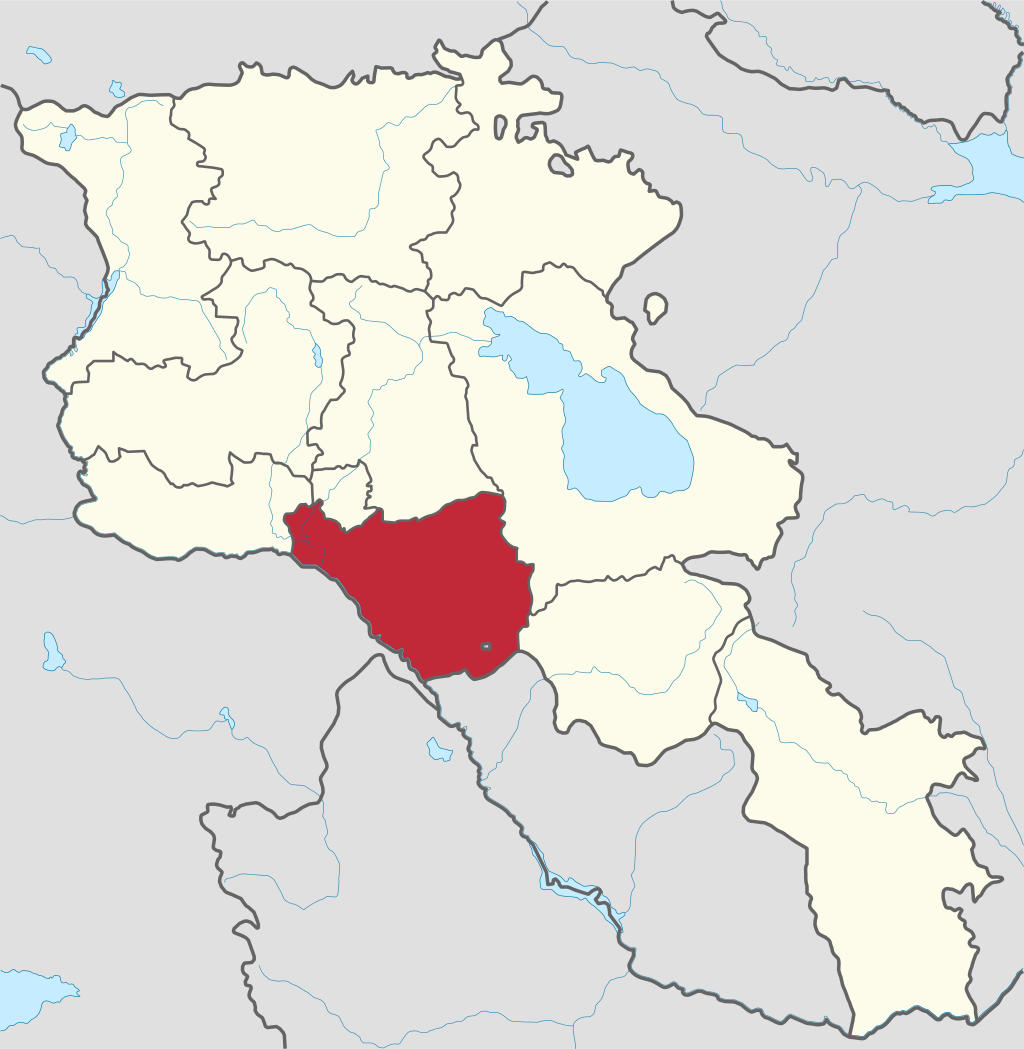
Ararat region is named after the biblical Mount Ararat which is mentioned in the Bible as a place where Noah’s ark has landed after the Great...
.png)
Armavir Region - Because of its Christian history the region is most famous for locals and Diaspora Armenians, who make pilgrimages to Armenia to...
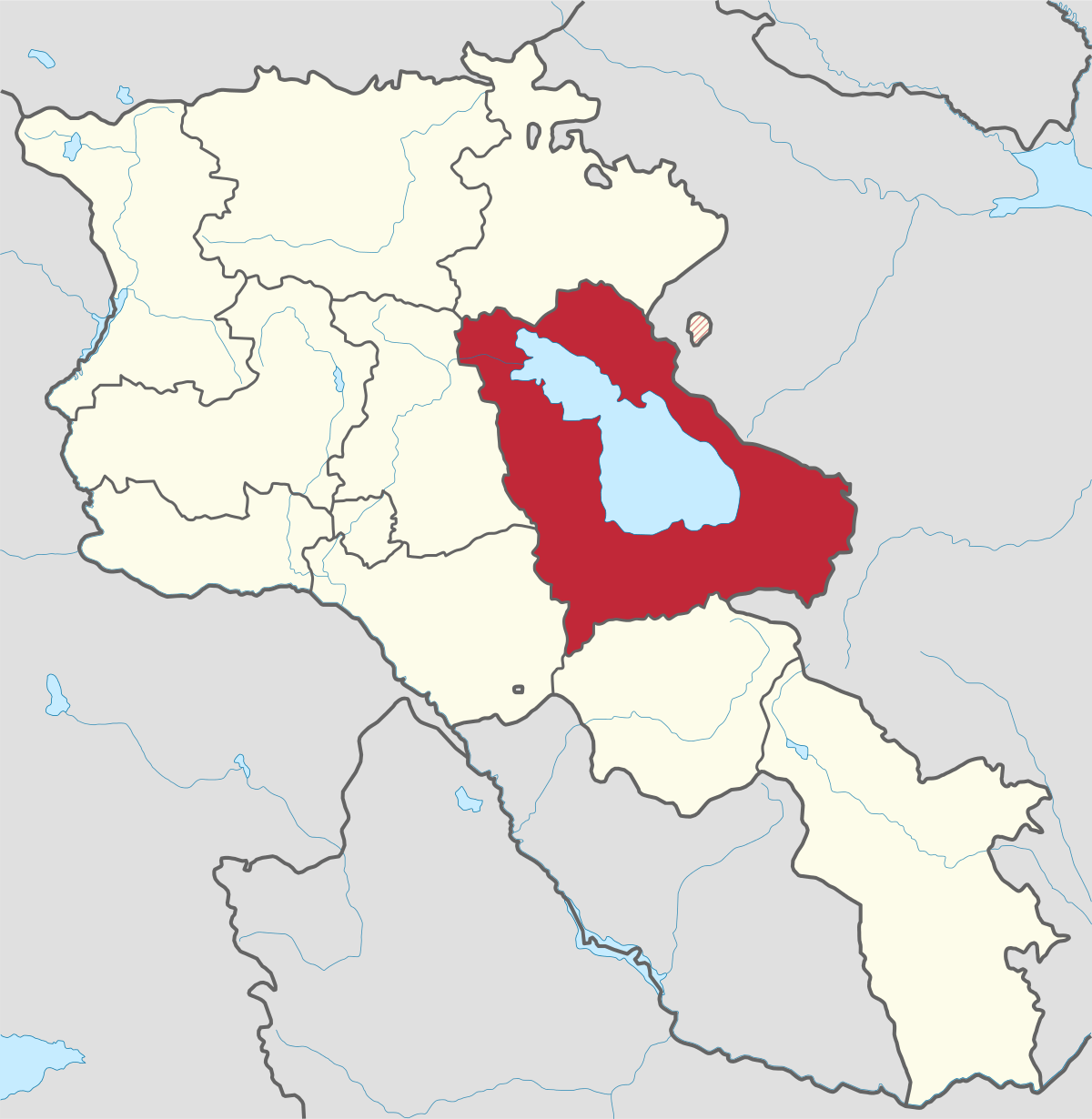
Gegharkunik ist die größte Region Armeniens, die an Aserbaidschan und die Shahumyan-Region der Republik Berg-Karabach grenzt. Ein Viertel der...
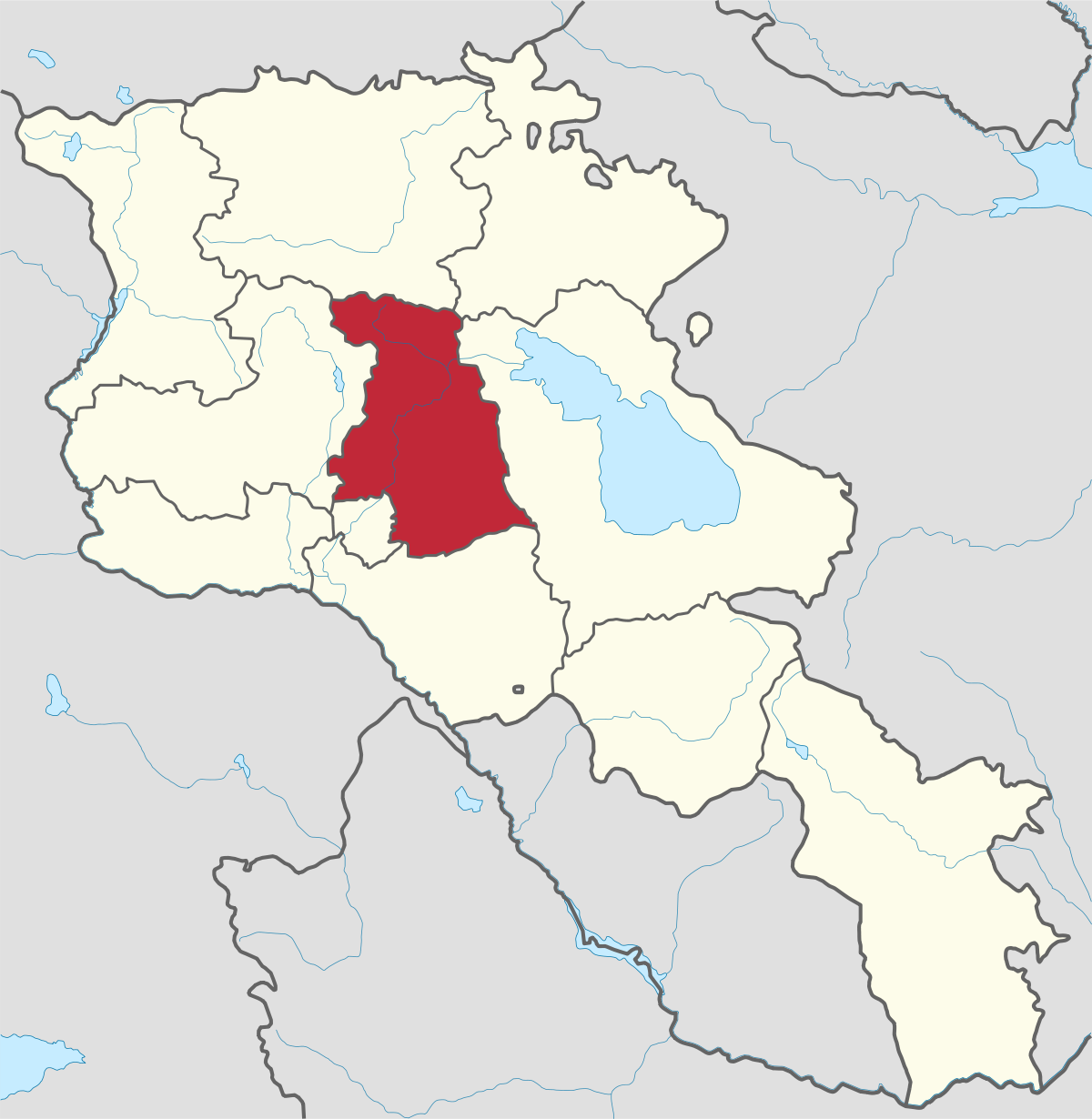
Kotayk region is located at the central part of the country and is home to many must-see sites in Armenia including the pagan Temple of Garni...
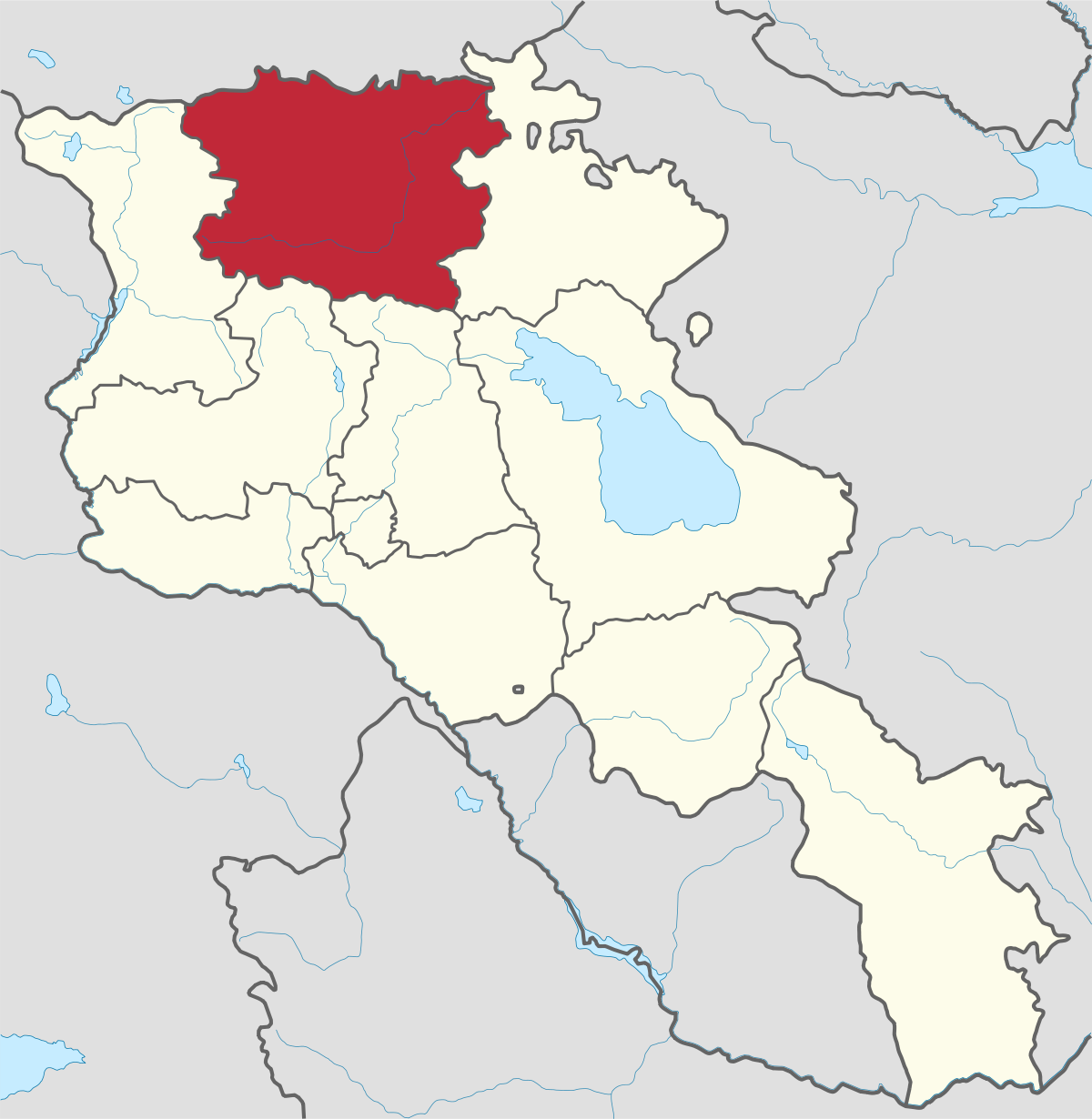
Lori region is in the northern part of Armenia, bordering on Georgia. It is considered Armenia’s greenest area, with more native forest land than...
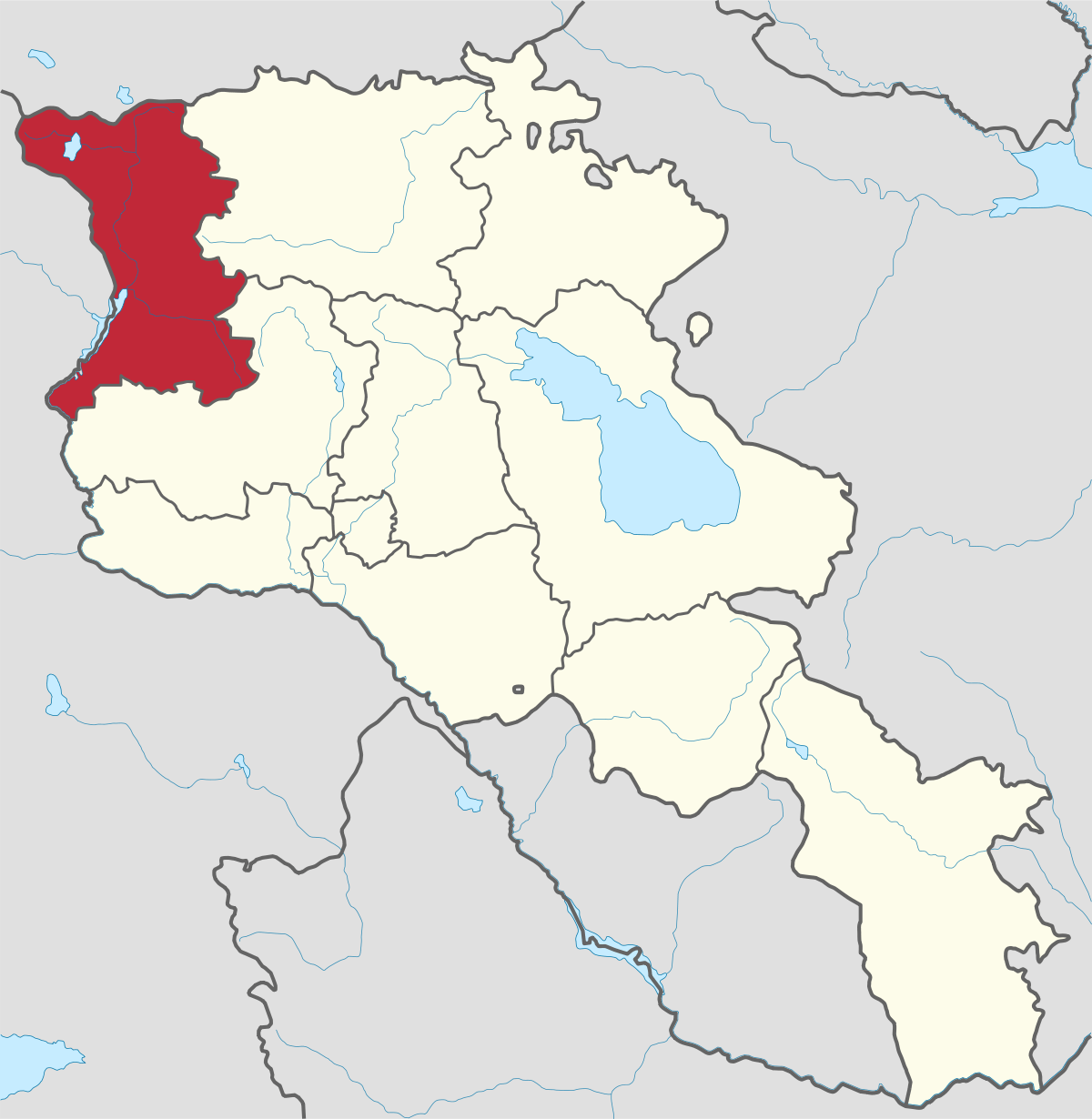
Shirak region lies in the north-west of Armenia. It borders with Georgia and Turkey. Shirak region is mainly dominated by the Ashotsk Plateau and...
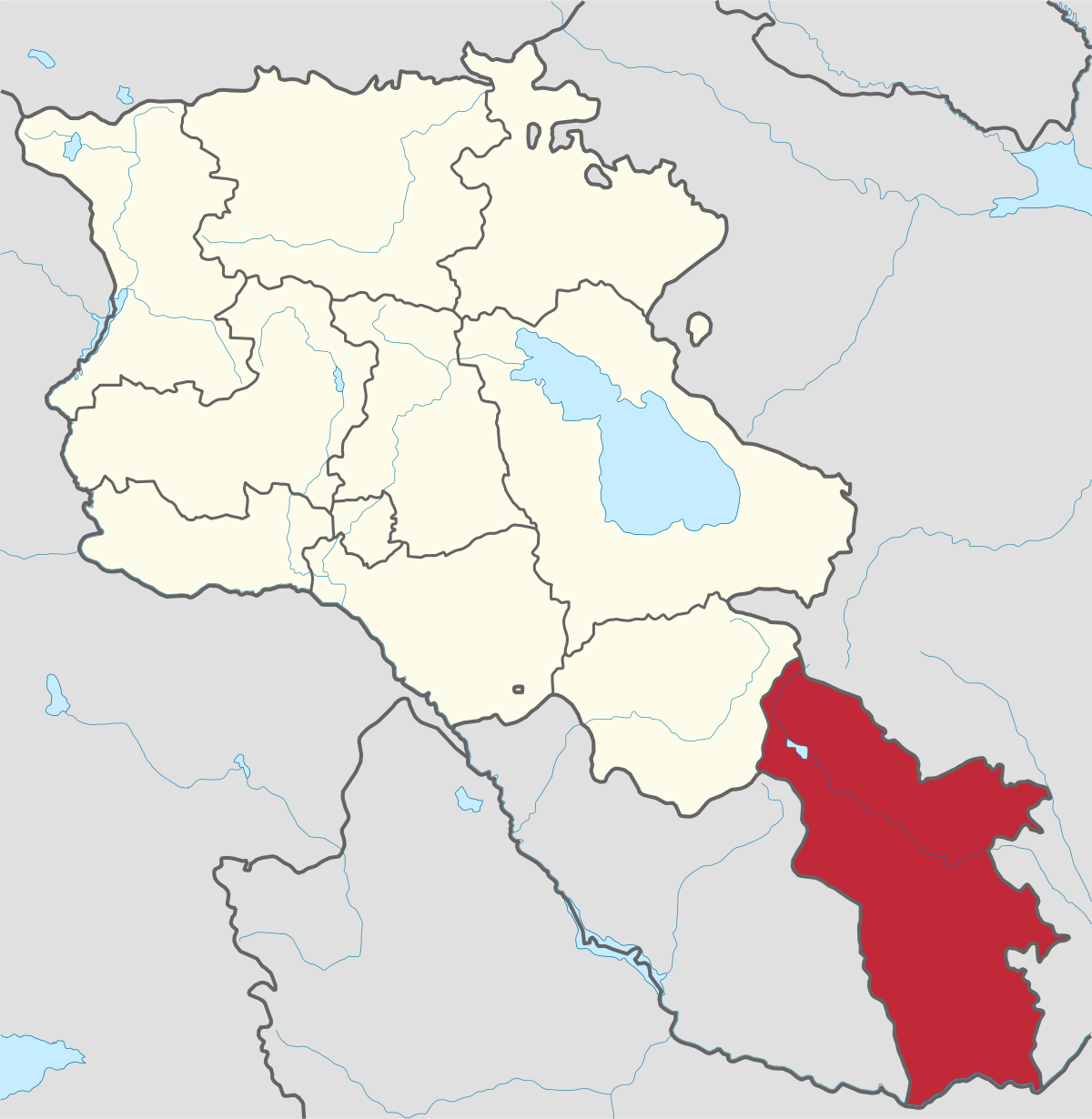
Syunik region- It is in the southern part of Armenia, bordering by Azerbaijan's Nakhchivan Autonomous Republic exclave, the de facto independent...
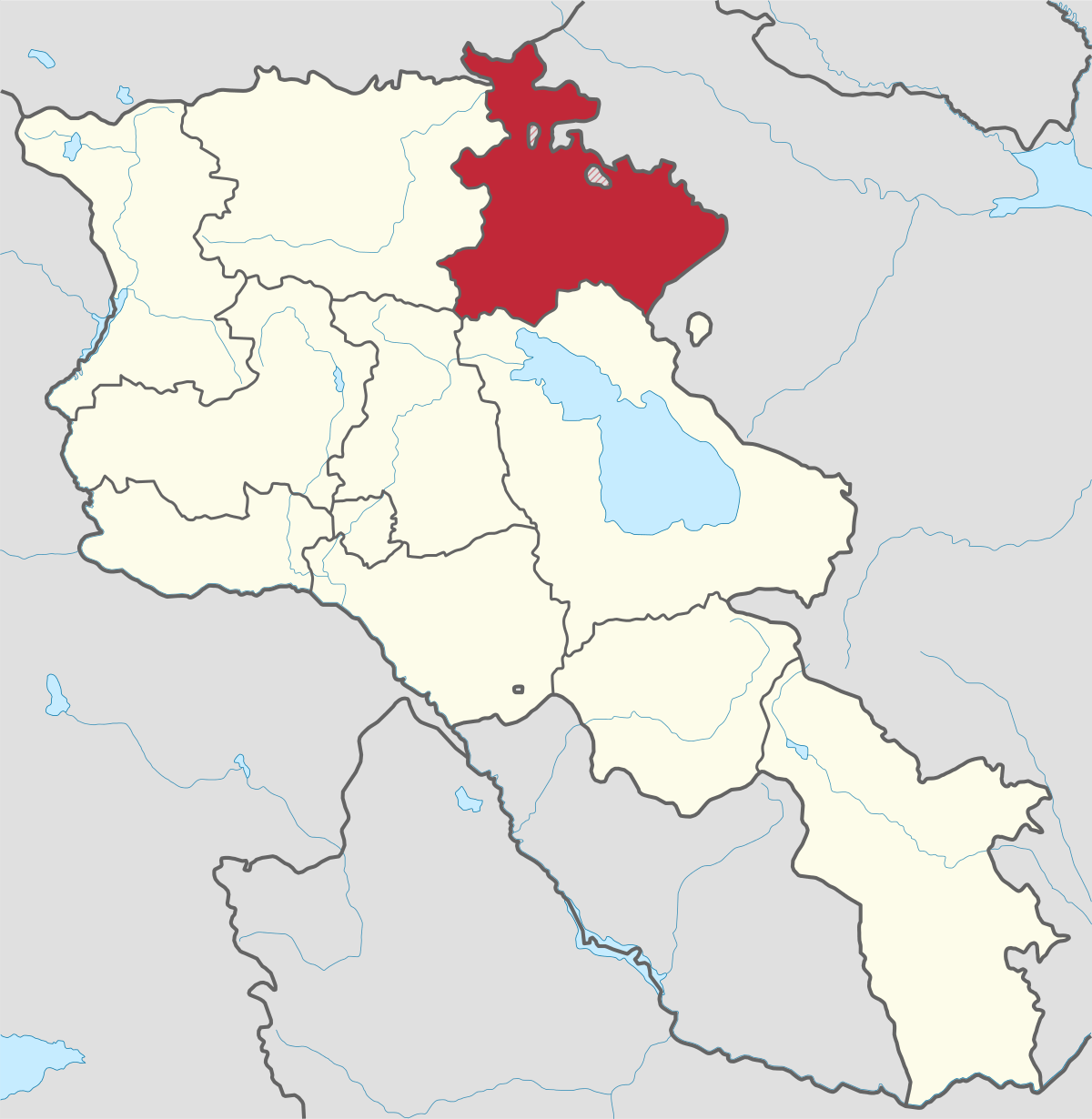
Tavush region lies in the Northeast of Armenia, bordering by Georgia and Azerbaijan. The territory is mainly mountainous and rocky hillsides...
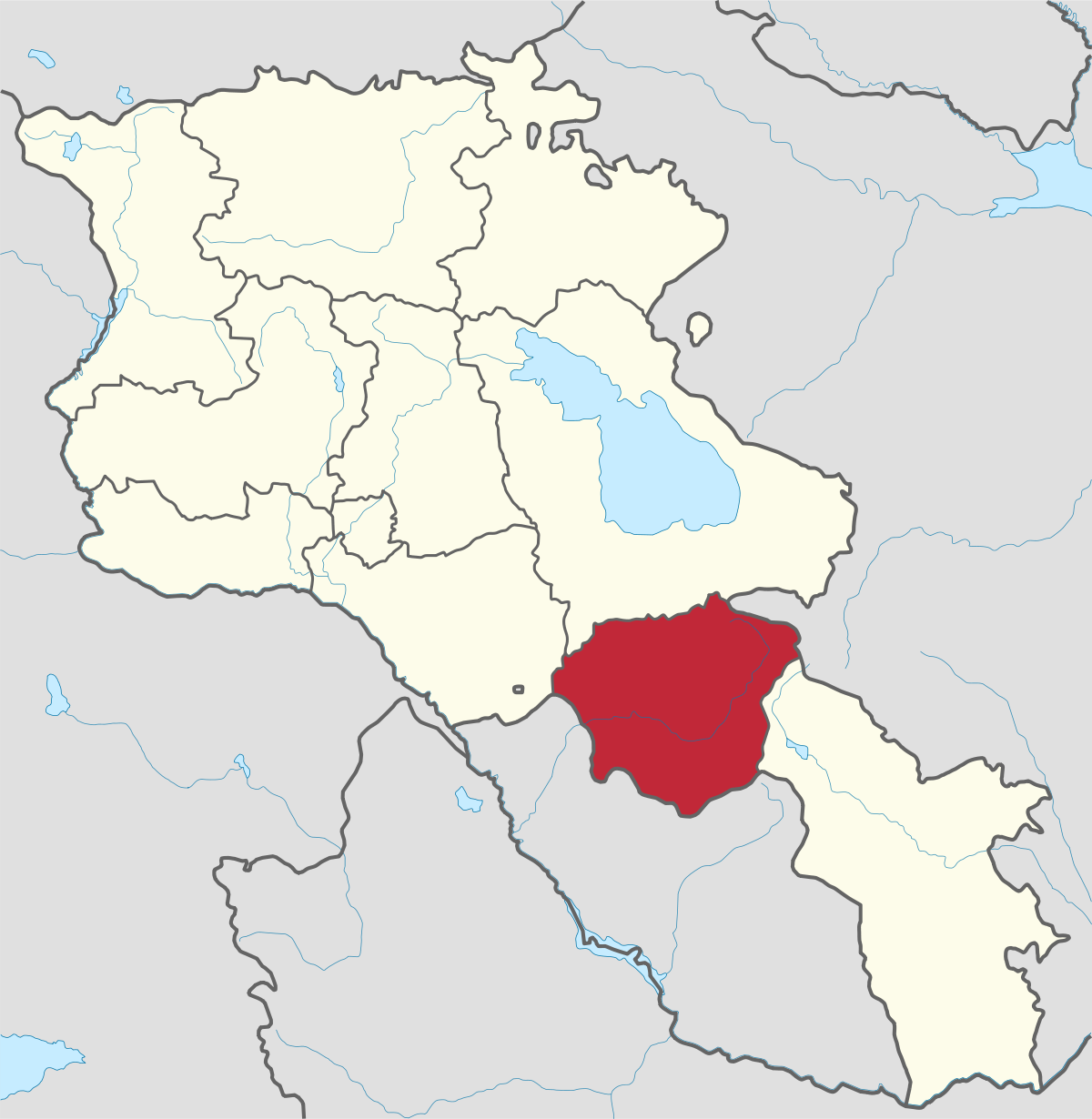
Vayots Dzor region is mainly a mountainous region at the southeastern end of the country, known with Jermuk Waterfall, Areni cave, Smbataberd...
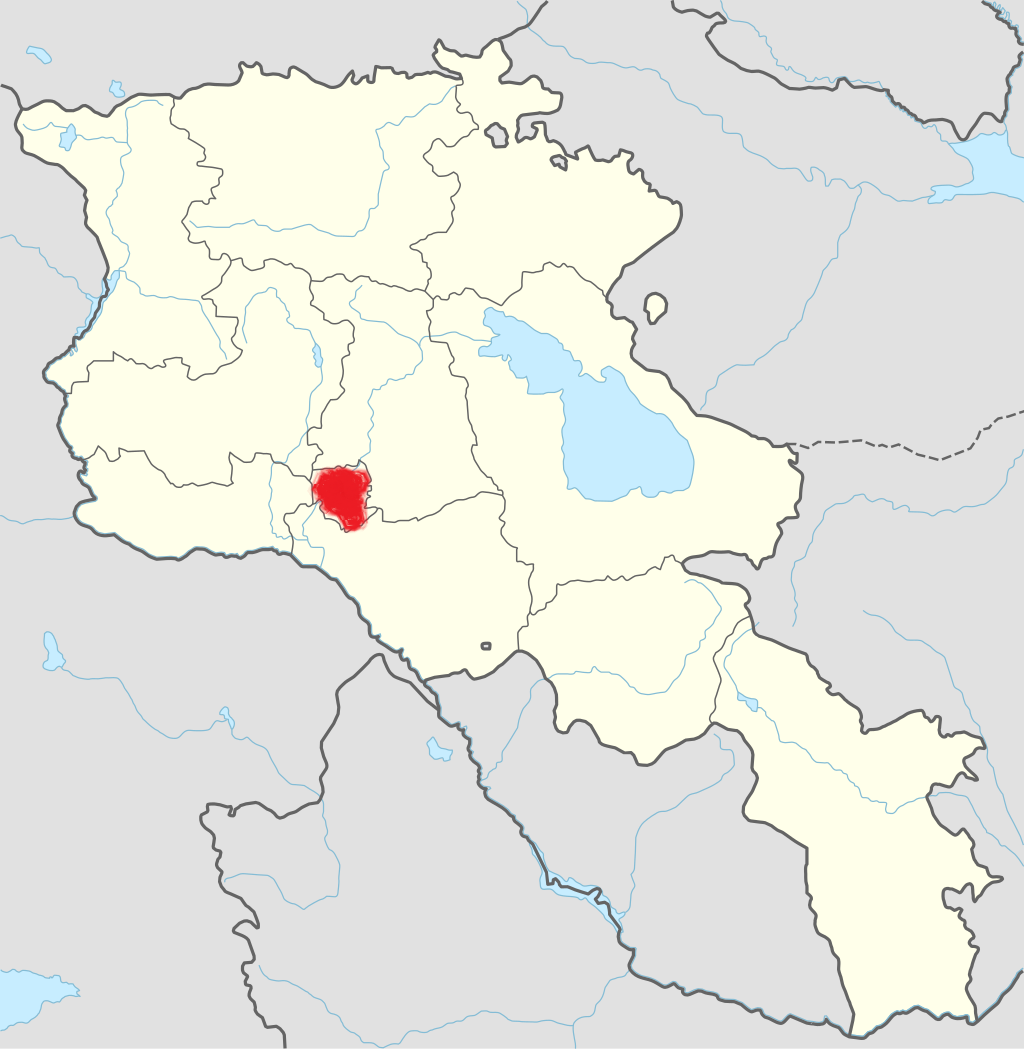
Yerevan city – 2800 years old. Yerevan is the capital of the Republic of Armenia with more than 1 million people. It is an amazing city with view...
800
149
1476
32